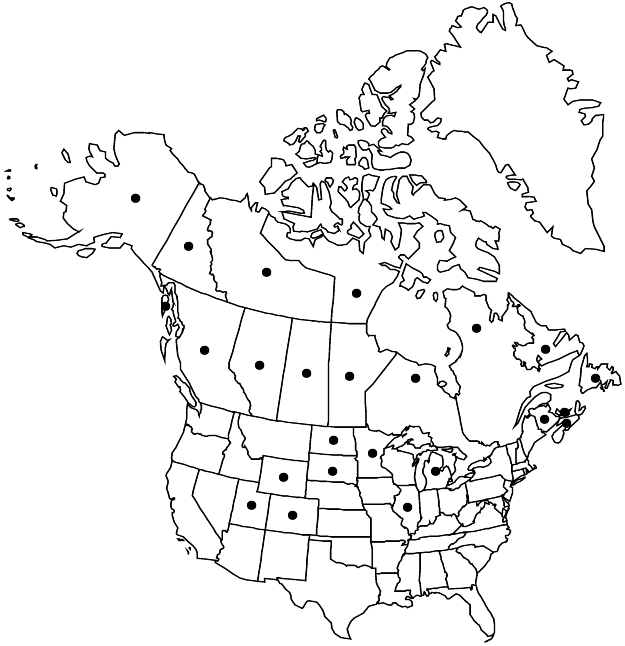Stellaria crassifolia
Hannover. Mag. 8: 116. 1784.
Plants perennial, delicate, forming small to large tangled mats or straggling through grass, from slender rhizomes. Stems diffusely branched, 4-angled, 3–30 cm, glabrous. Leaves sessile or subsessile; blade with midrib obscure, broadly elliptic-lanceolate to linear-lanceolate, widest at or above middle, 0.2–0.8(–1.5) cm × to 2 mm, ± succulent, base cuneate, margins entire, apex acute to acuminate, glabrous; leaf blades in terminal buds sometimes become fleshy and form gemmae. Inflorescences with flowers usually solitary, terminal and in axils of distal leaves forming open, diffuse cymes; bracts foliaceous, 1–10 mm; 1 or 2 pairs of bracteoles sometimes present, 1–3 mm, herbaceous or with narrow membranous margins. Pedicels erect or sharply angled at base, becoming sharply curved at apex, 3–40 mm, glabrous. Flowers 5–8 mm; sepals 5, 3-veined, narrowly triangular-lanceolate, 3–3.5(–4) mm, margins straight, narrow, scarious, apex acute, glabrous or rarely margins pubescent; petals 5, 2.5–5 mm, equaling to slightly longer than sepals; stamens 5 or 10; styles 3, ascending, curved at tip, ca. 2 mm. Capsules straw colored, conic to ellipsoid, 4–5 mm, longer than sepals, apex obtuse, opening by 6 valves; carpophore absent. Seeds reddish brown, reniform to round, 0.7–1 mm diam., rugose. 2n = 26.
Phenology: Flowering early summer.
Habitat: Marshes, streams, cold, wet, grassy places
Elevation: 0-3000 m
Distribution

Alta., B.C., Man., N.B., Nfld. and Labr., N.W.T., N.S., Nunavut, Ont., P.E.I., Que., Sask., Yukon, Alaska, Colo., Ill., Mich., Minn., N.Dak., S.Dak., Utah, Wyo., Europe, Asia.
Discussion
The sterile shoots of Stellaria crassifolia (described as forma gemmificans Norman) form fleshy terminal buds under suitable conditions of temperature and day length. These propagules survive under the snow and are readily dispersed in the spring runoff.
Leaf shape and size vary considerably. Leaves tend to be smaller and wider in exposed habitats, and longer and narrower in sheltered, more favorable habitats. Plants with pubescent margins to the sepals are referable to var. eriocalycina Schischk.
Stellaria crassifolia is often confused with S. humifusa, but the former is a much more slender, delicate species with long pedicels that are sharply angled below the capsule.
Selected References
None.